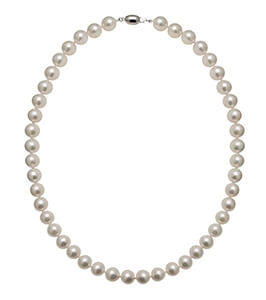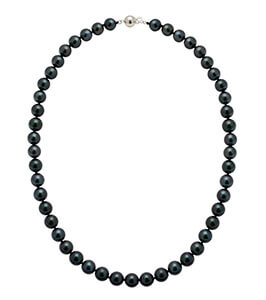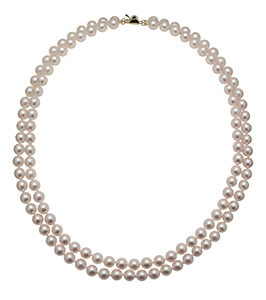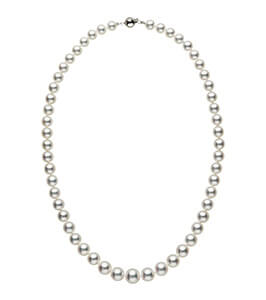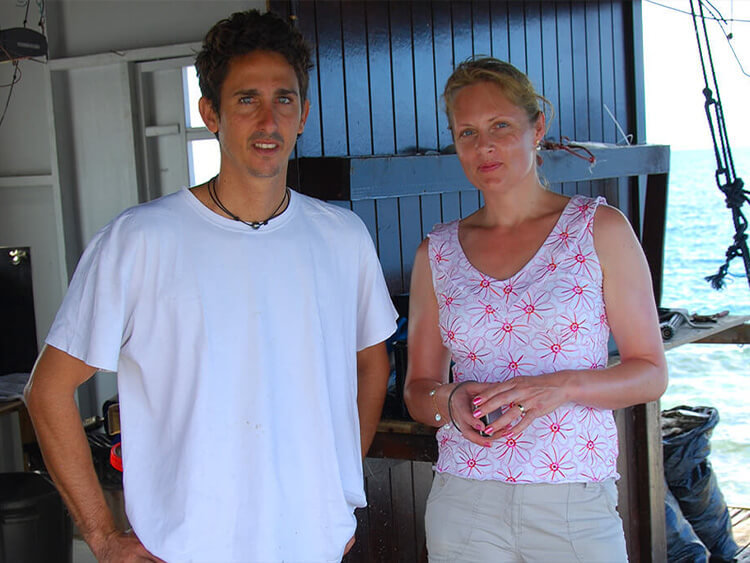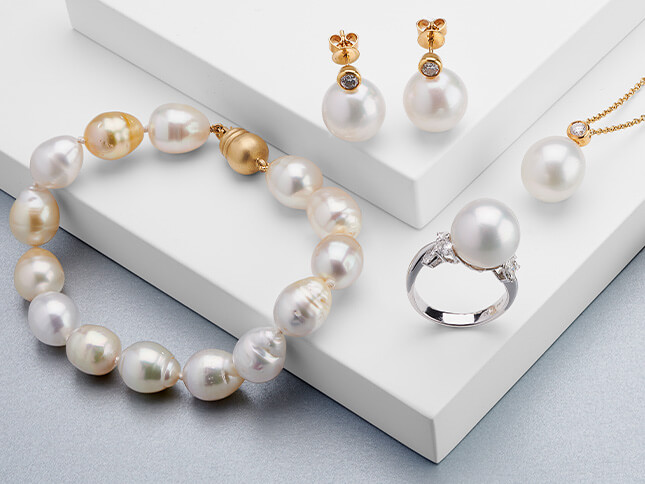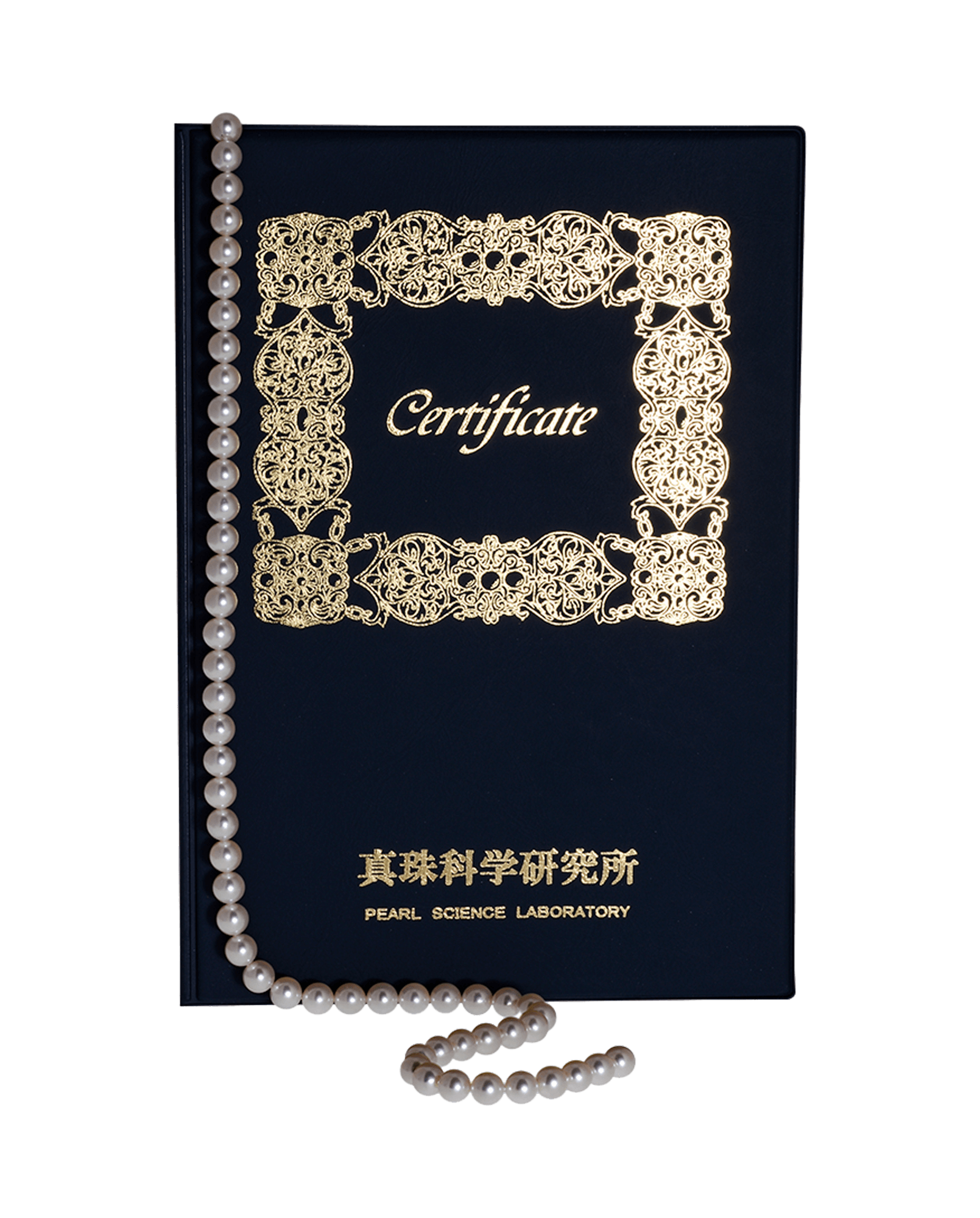
Hanadama Pearl Necklaces
花珠Hanadama pearl necklaces, dubbed "Flower Pearls", are the gold standard of quality for Akoya pearls. With such dazzling luster, you'll be the center of attention even across a crowded room. Distinguished by their luster and orient, these are certified by only two specialist laboratories in Japan.
Hanadama Grade White Akoya Necklaces.
Independently certified to be the very highest quality. .Hanadama Pearl Grading
Selection Process for Certification
Hanadama pearls are highly prized and considered some of the finest pearls in the world. They are sourced from the akoya oyster, a type of saltwater pearl mollusk, in Japan. The grading process for Hanadama pearls involves a rigorous laboratory evaluation of several quality factors such as shape, size, surface quality, lustre, and colour.
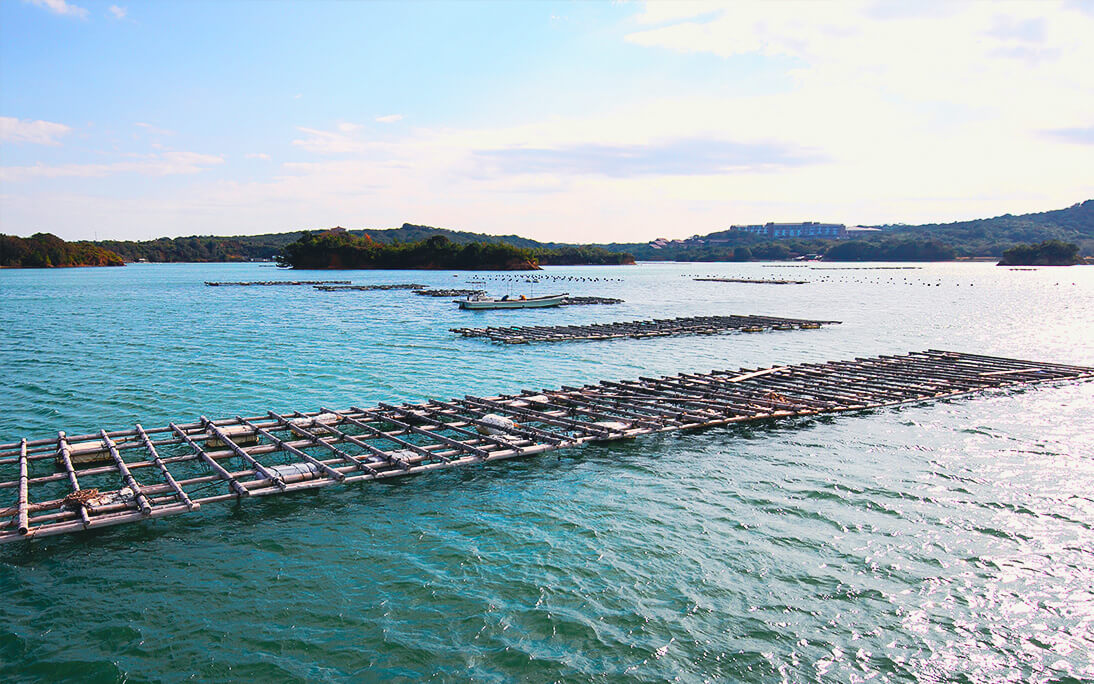
Akoya Pearl Farming
Akoya pearls are saltwater pearls that are grown in the Pinctada Fucata oyster, which is commonly found in the waters of Japan. The process of growing Akoya pearls involves several steps:
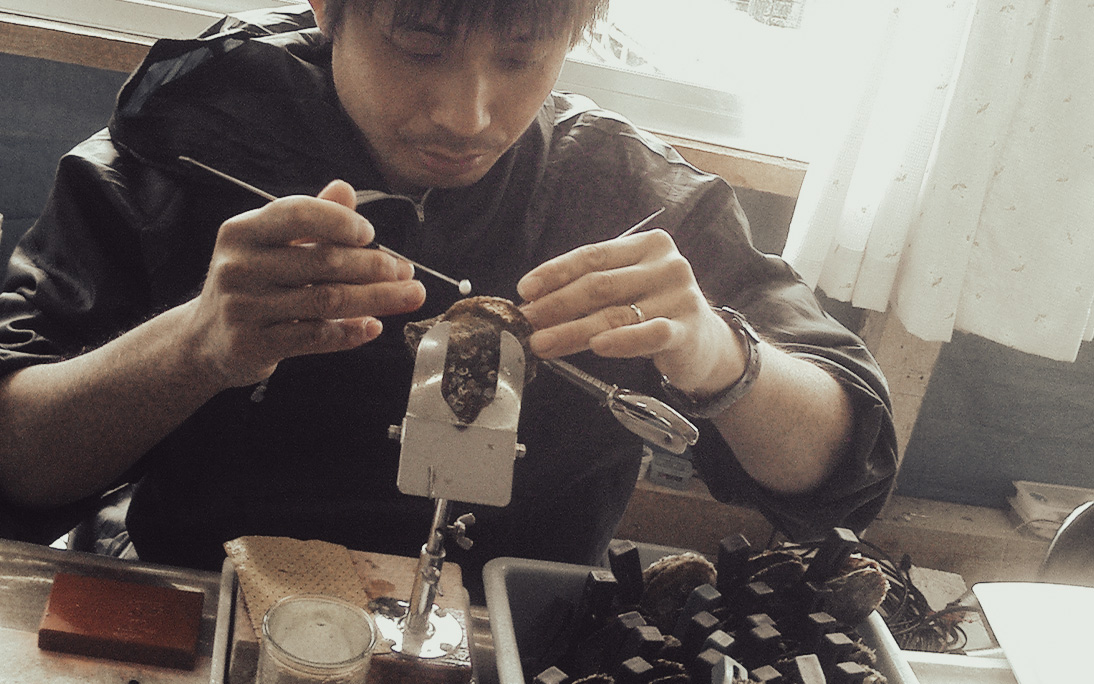
Seed Insertion & Nucleus coating
A small bead, usually made of mother-of-pearl, is inserted into the oyster. This bead serves as a nucleus for the pearl to grow around.
The bead is then coated with a thin layer of mantel tissue, which the oyster will use to secrete nacre, the material that forms the pearl.
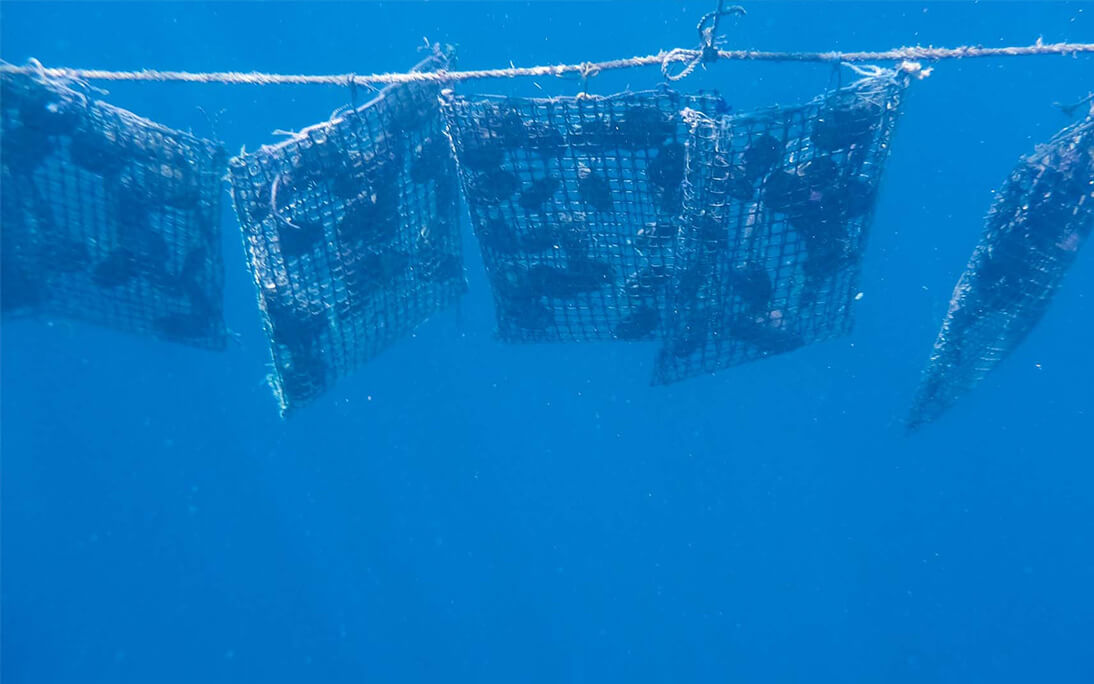
Growing the Pearl
The oyster is then returned to the water and the growing process begins. The oyster will continue to secrete nacre, adding layer upon layer to the bead, until a pearl of the desired size is formed.
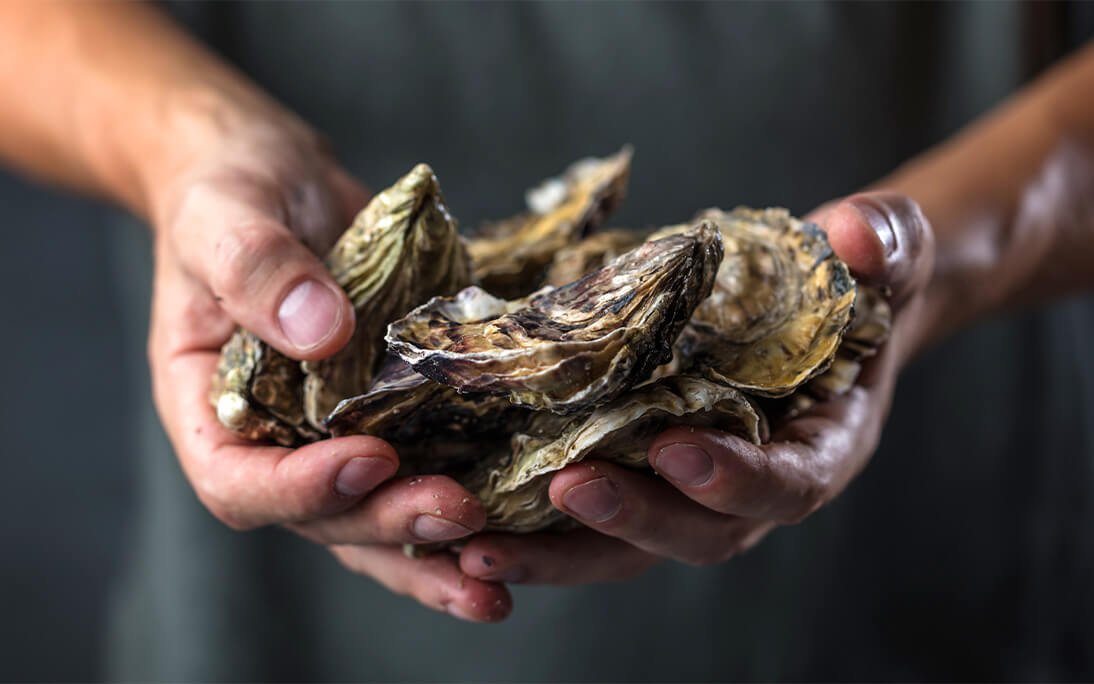
Harvesting
Akoya pearls are typically harvested after about 12 to 18 months of growth. The oysters are taken out of the water and the pearls are removed.
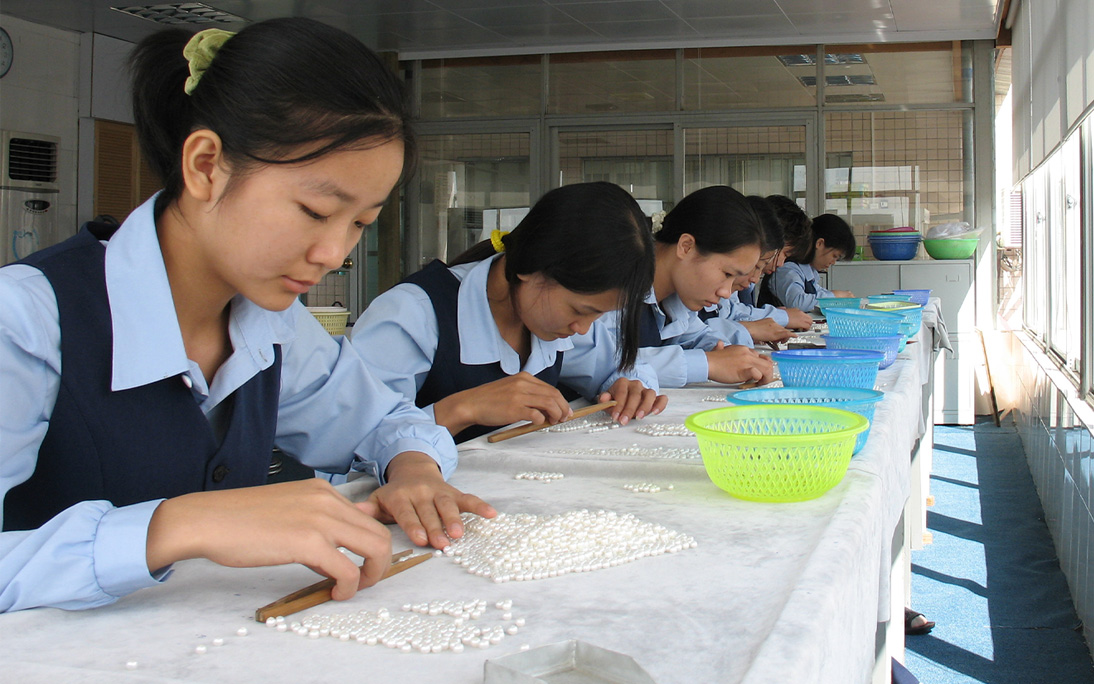
Akoya Grading and Sorting
The pearls are then sorted and graded based on factors such as size, shape, luster, and surface quality. The highest-quality pearls are typically round in shape, have a high luster, and are free of blemishes and surface irregularities.
The first step in the grading process is to sort the pearls based on size and shape. The pearls must meet certain standards for roundness, symmetry, and uniformity to be considered for Hanadama certification.
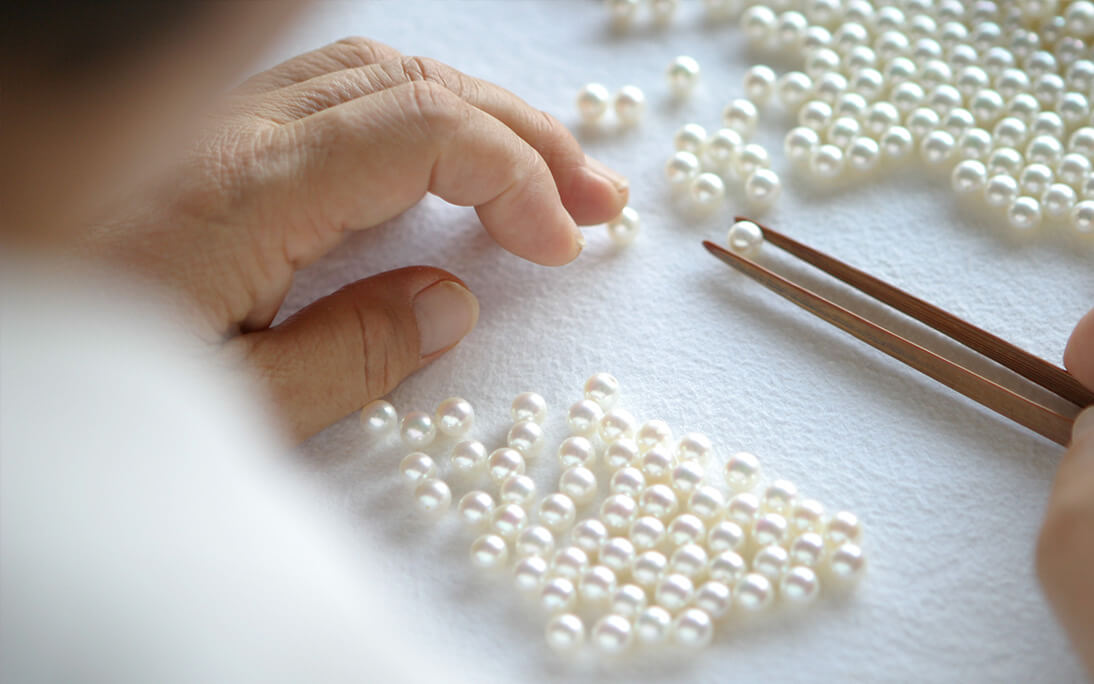
Lustre
Lustre is one of the most important factors in grading Hanadama pearls. It refers to the shine and brightness of the pearls and is measured based on the quality of the nacre (the iridescent layer that covers the pearl). Hanadama pearls are known for their high lustre, which is due to the thick layer of nacre and the quality of the mother of pearl inside the oyster.
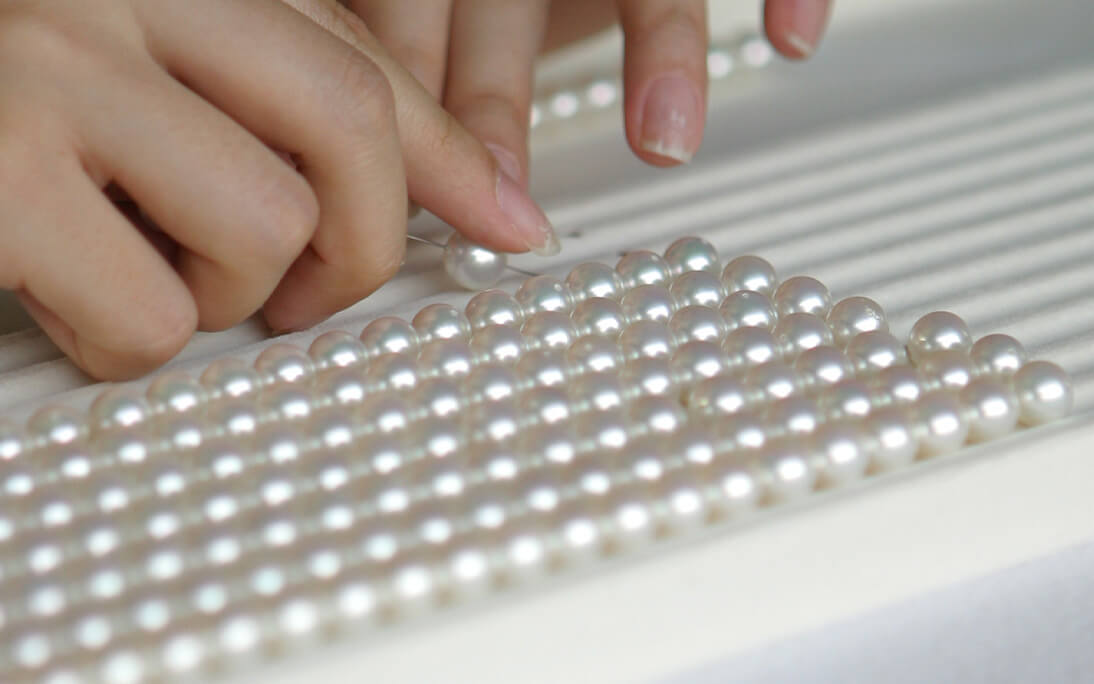
Surface Quality
Next, the surface quality of the pearls is evaluated. This includes checking for blemishes, nicks, and any other imperfections on the surface of the pearl. The fewer blemishes a pearl has, the higher its value and the better its surface quality.

Pearl Science Laboratory
Luster is one of the most important factors in grading Hanadama pearls. It refers to the shine and brightness of the pearls and is measured based on the quality of the nacre (the iridescent layer that covers the pearl). Hanadama pearls are known for their high luster, which is due to the thick layer of nacre and the quality of the mother of pearl inside the oyster.
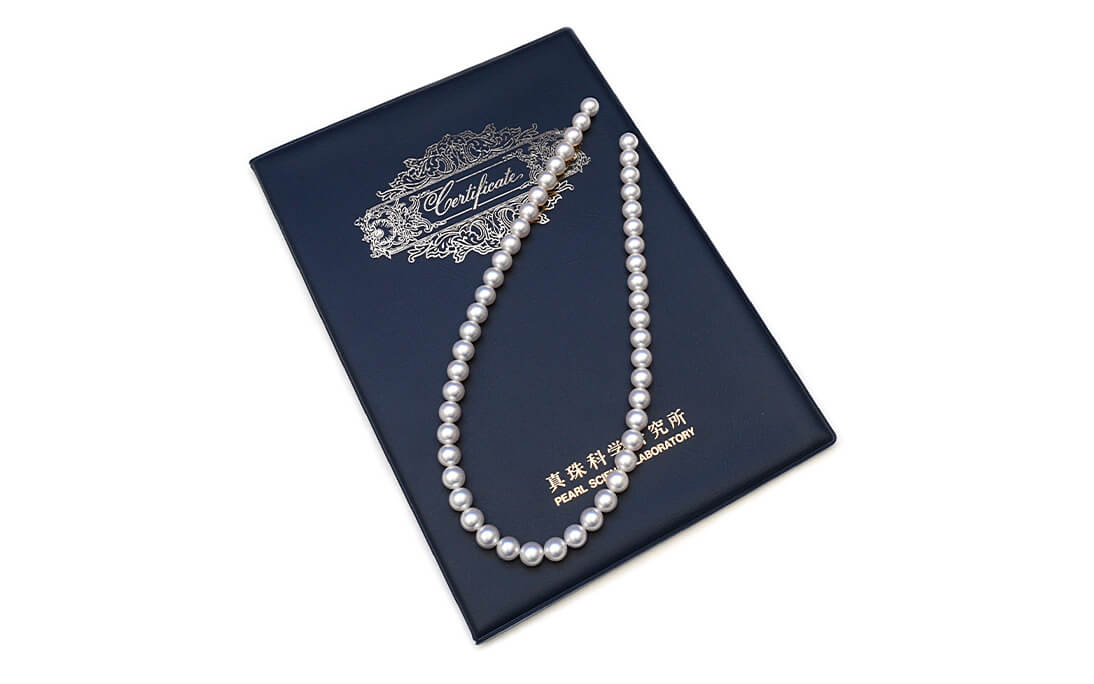
Hanadama Certification
Next, the surface quality of the pearls is evaluated. This includes checking for blemishes, nicks, and any other imperfections on the surface of the pearl. The fewer blemishes a pearl has, the higher its value and the better its surface quality.

